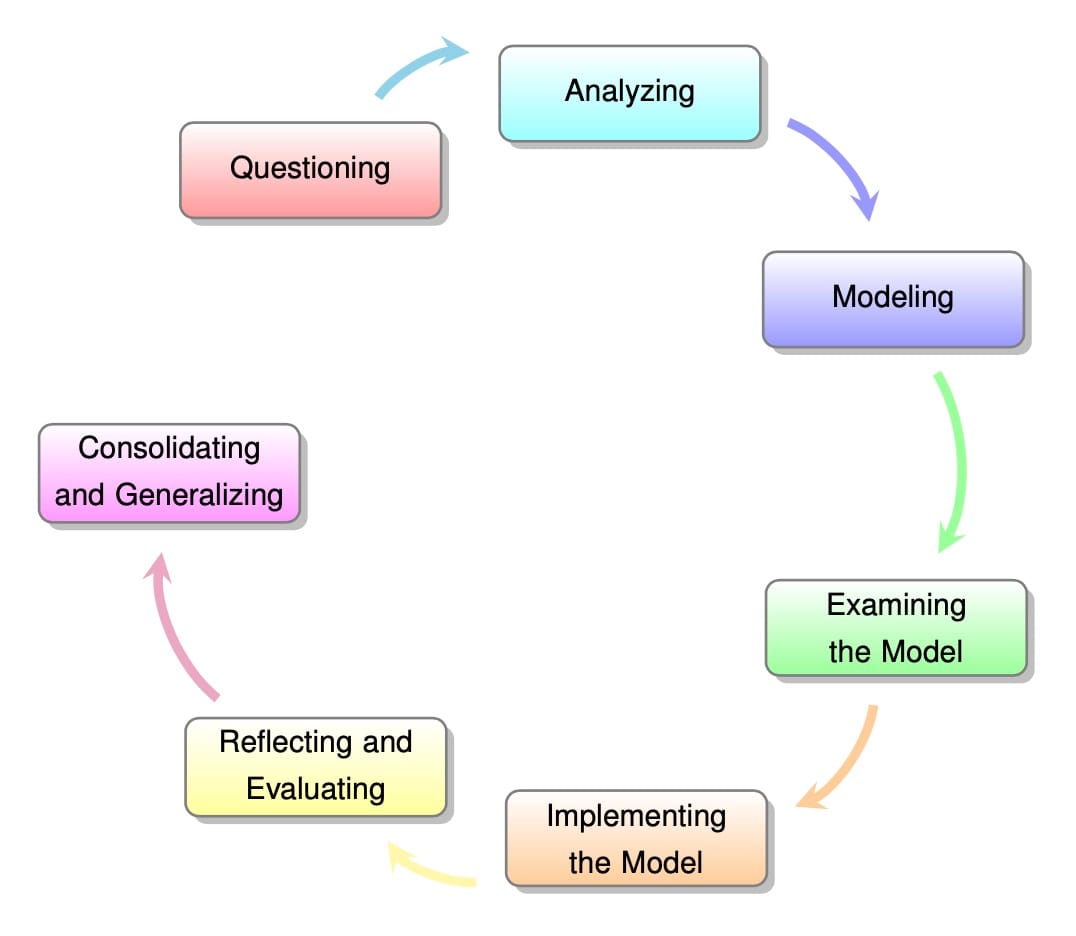Cycles of Expansive Learning

In my previous post – Activity Systems – I introduced Yrjö Engeström's Theory of Expansive Learning, which is a version of Cultural-Historical Activity Theory (CHAT). In that post I focused on the notion of an activity system, using Earl Spencer's dairy farm as an example. From Engeström's perspective, activity systems are the answer to the question, "What is changing," when one embarks on efforts to transform systems such as dairy farms or schools or community service agencies. For Engeström, the answer to the question, "How do activity systems change," is cycles of expansive learning. A prototypical expansive learning cycle is shown in the figure below.

Transforming a Dairy Farm
The transformation of Earl Spencer’s activity system, from a conventional (industrial) farm to a new (organic) farm, reflects a process of expansive learning. Engeström has proposed a sequence of seven actions that constitute an expansive learning cycle (see Figure):
- The first action is that of questioning, criticizing, or rejecting some aspects of the accepted practice and existing wisdom. In Earl Spencer’s case, it appears he began questioning his current practices when "wet weather reduced his harvest by half," and "he chose to sell half his herd." Notice that this event, based on weather patterns, created a crisis that forced Earl Spencer to make a choice: buy more feed or sell some cows. These choices reflect the inherent contradiction in dairy farming, that between the industrial mindset and the organic (relational) mindset, as described in my previous post. Resolving this contradiction is the motivation for the particular expansive learning cycle described in this post.
- The second action is that of analyzing the situation. Analysis involves mental, discursive or practical transformation of the situation in order to find out causes or explanatory mechanisms. According to Wendell Berry, "[Earl Spencer] began to ask fundamental questions about the nature of the creatures and the land he was dealing with, and ask if he could not bring about some sort of balance between their needs and his own. His conclusion was that 'to be in balance with nature is to be successful.' His farm, he says, had been going in a 'dead run'; now he would slow it to a 'walk'." This observation is interesting in light of the important paper by the French philosopher Paul Cilliers, entitled “On the importance of a certain slowness.” Cilliers' main point is that "a certain slowness" is required to maintain the integrity (pattern) of connections within an organic system (more on this in later posts).
- The third action is that of modeling the newly found explanatory relationship in some publicly observable and transmittable medium. Based on Berry’s account in “Solving for Pattern,” we can’t know for certain that Earl Spencer did this kind of modeling, but it is plausible that he did some calculations or note taking or scheduling on paper, to help him conceptualize the changes he wanted to make. It is also possible that the farm itself was a model, that he could “experiment” with, as he tried out his new way of farming — his new activity system.
- The fourth action is that of examining the model, running, operating and experimenting on it in order to fully grasp its dynamics, potentials and limitations. In this respect, Earl Spencer (and any other farmer who lives on his or her farm) has the advantage working with a concrete "model", which is the farm itself – of course, it take an organic (relational) mindset to recognize the patterns that matter to the health of the farm (and farmer). Not all activity systems are so directly observable as is a dairy farm.
- The fifth action is that of implementing the model by means of practical applications, enrichments and conceptual extensions. Wendell Berry’s list of specific actions, reproduced in my post – Earl Spencer's Farm – reflects the "practical measures" implemented by Earl Spencer (e.g., a plan to phase out his use of purchased fertilizers, coupled with a plan to increase and improve his use of manure).
- The sixth action is that of reflecting on and evaluating the process of expansive learning. Berry summarizes the outcomes in the final paragraph of the middle section of his essay, where he starts out by saying "The most tangible results are that the costs of production have been 'dramatically' reduced, and that per cow production has increased by 1500 to 2000 pounds." It is important to point out that expansive learning is, in its essence, a reflective process. In this regard, Engeström was strongly influenced by Gregory Bateson, whose term for this sort of learning was "Level II Learning" – a topic that I will be discussing in a later post (and see below).
- The seventh action is that of consolidating and generalizing the outcomes into a new stable form of practice. Presumably Earl Spencer achieved this during his eight-year plan to phase out entirely his use of purchased fertilizers. And it is important to point out here that as one cycle of expansive learning begins to achieve some kind of closure, there is almost always new contradictions that are revealed, and which set off new cycles: In Engeström's own diagrams, there is usually an arrow leading out from "Consolidating and Generalizing" that points outside the circle of the current cycle, suggesting a new cycle that builds on and extends the current one. More on this later.
A good discussion of Gregory Bateson's Levels of Learning can be found in an article by Will McWhinney (2005): The White Horse: A Reformulation of Bateson's Typology of Learning, Cybernetics & Human Knowing, Vol. 12, No. 1-2, pp. 22-35.